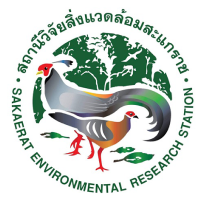Keywords :
Acacia auriculiformis; Community-level Physiological Profile; Land Degradation and Rehabilitation; Multivariate analysis; Soil Bacterial Community
บทคัดย่อ :
This study was conducted to investigate the rehabilitative effects of planting Acacia auriculiformis
trees on degraded land by observing variations in soil bacterial community profiles
provided by community-level physiological profiling. Soil bacterial and physicochemical
comparisons between an original evergreen forest and the Acacia plantation plot, established
on an area severely degraded as a result of deforestation, showed that most soil characteristics
were rehabilitated 18 to 19 years after the plantation of Acacia according to single variables,
Shannon and Simpson diversity indices based on the community-level physiological profiles,
principal component analysis and redundancy analysis. However, a more strict statistical
comparison, discriminant analysis, completely discriminated between the Acacia plantation
and the evergreen forest soils when the community-level physiological profiles were compared.
Thus, the Acacia plantation soil was shown to still be in the process to full recovery.
Here, we discuss the relevance of planting A. auriculiformis in land rehabilitation schemes
in savanna regions.
เอกสารอ้างอิง :
Doi, R., & Ranamukhaarachchi, S. L. (2009a). Community-level physiological profiling in monitoring rehabilitative effects of Acacia auriculiformis plantation on degraded land in Sakaerat, Thailand. Silva Fenn, 43(5), 739-754.



